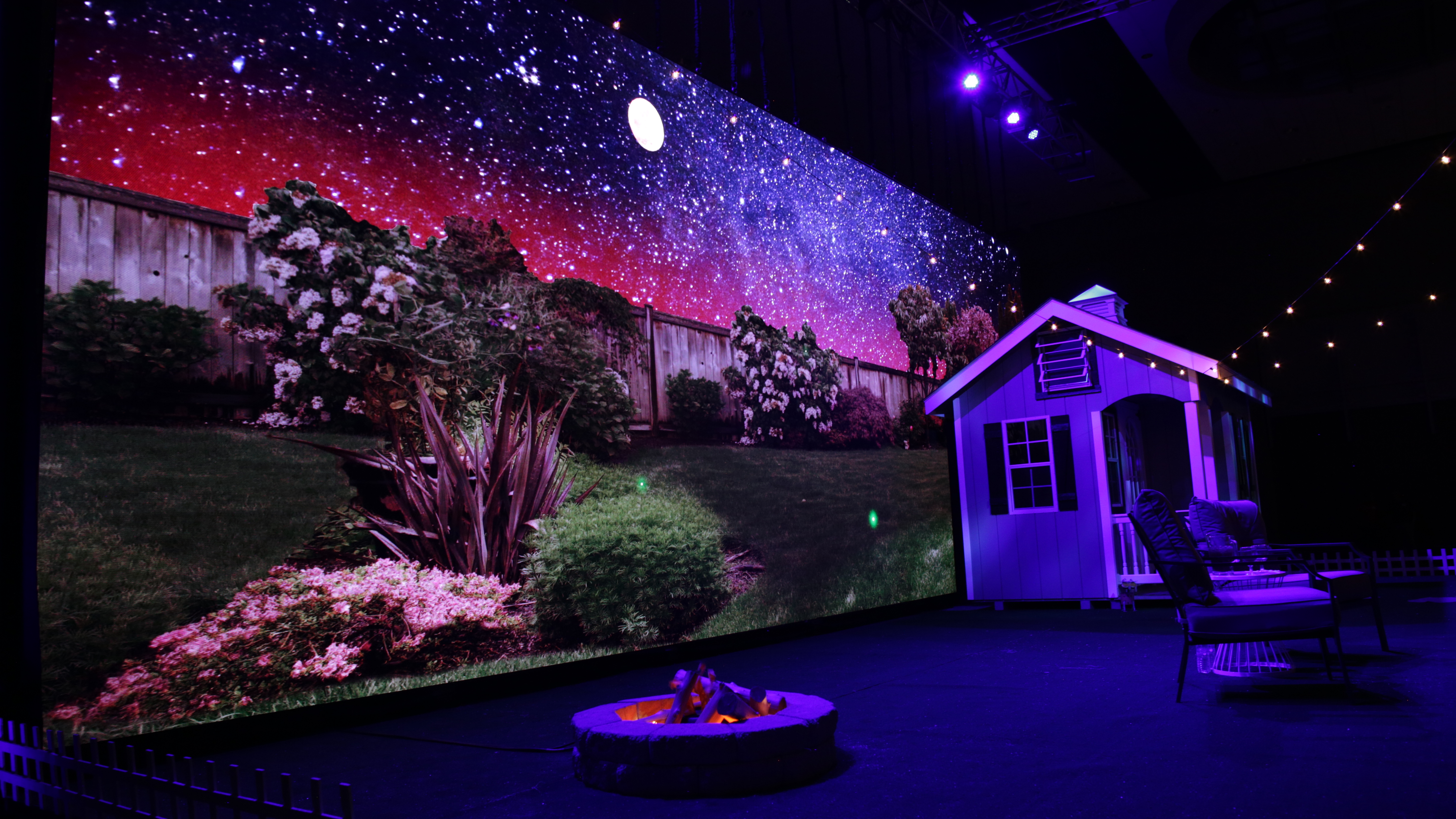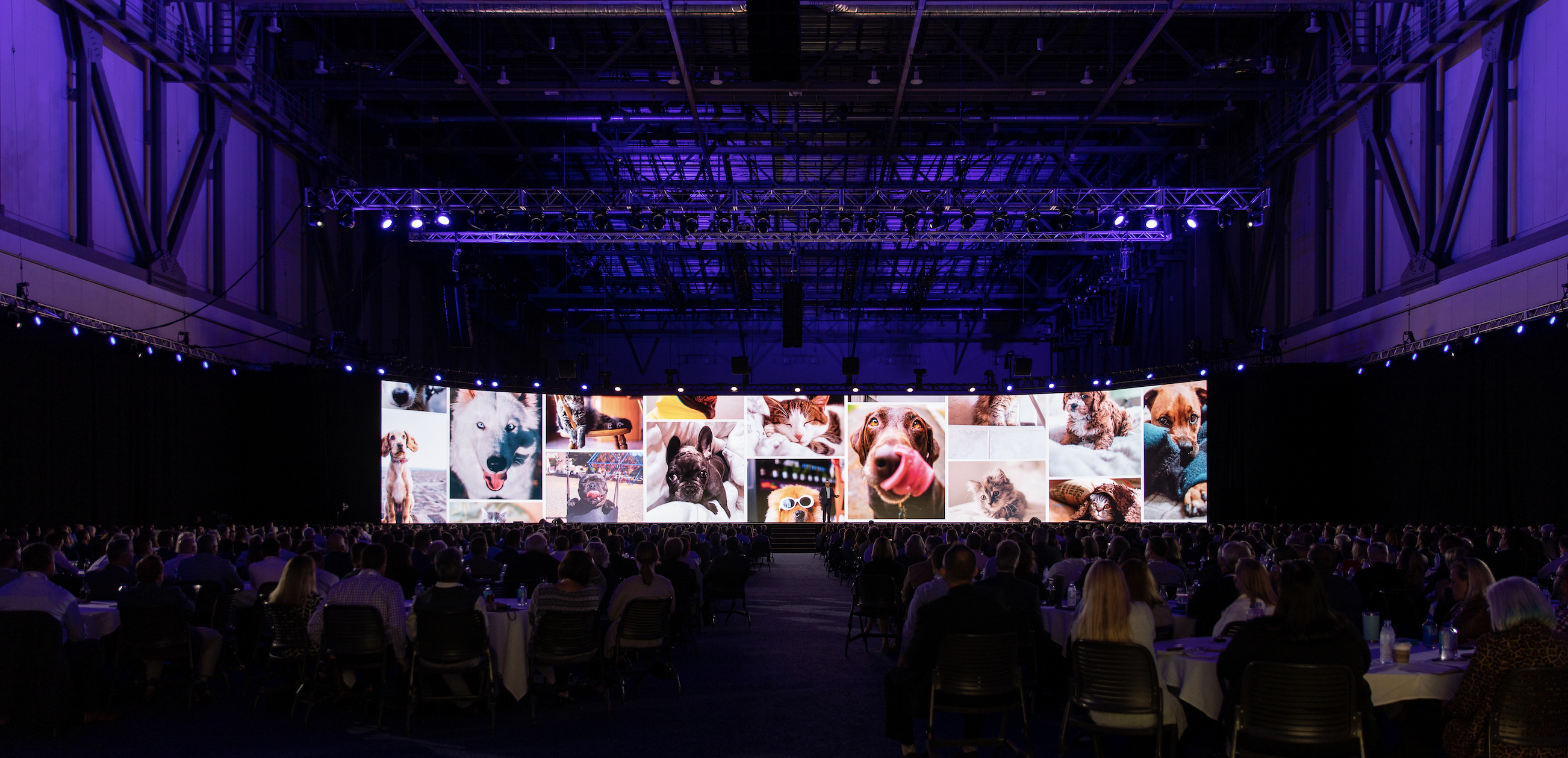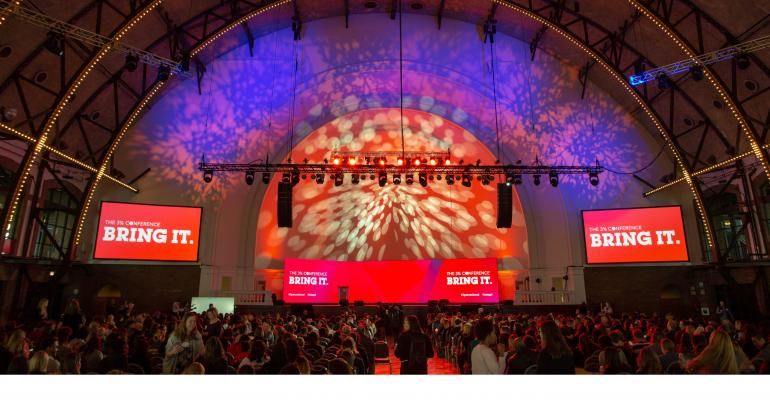For planners of internal corporate meetings—from sales kickoffs to state-of-the-company programs aimed at all employees—the possibilities for creating a truly memorable production are greater than ever, thanks to always-advancing technology. That good news, however, is actually a double-edged sword: The employees coming to company events are also consumers who get exposed to brand experiences that use those same technologies to continually raise the “wow” factor. As a result, corporate planners have to be more creative with internal-event production simply to keep pace with their audience’s growing expectations and shrinking attention spans.
According to Scott Schoeneberger, managing partner for event-production firm Bluewater, which works on about 2,000 events a year aimed at consumers and internal audiences alike, “The most memorable productions create shared moments that set the desired event tone, provide better access to content, spark conversation, and build a community. They also can position a brand or company in employees’ minds as being innovative, or just ‘getting it,’” which boosts trust, confidence, and morale and can improve employee retention.
 We asked Schoeneberger a few questions aimed at helping corporate planners leverage newer production technology in ways that make a lasting impression on internal audiences at reasonable cost.
We asked Schoeneberger a few questions aimed at helping corporate planners leverage newer production technology in ways that make a lasting impression on internal audiences at reasonable cost.
MeetingsNet: What would you say is one element of production technology that can take internal meetings to the next level?
Schoeneberger: Actually, it’s the creative application of the technologies that are already out there through the use of next-generation media-server software apps. These allow for better control of all lighting and video elements, and they aren’t so expensive that production companies have to charge clients a ton to use them. This means their use can be justified for internal meetings, not just customer events and consumer activations.
These servers let us create deeper audience immersion—we can blast certain areas of the room with focused light, do projection mapping to add texture and brand colors to 3D objects, and aim a projector at a light source so we can have some cool motion in the visuals. Groups of presentation panels can be zoned throughout the room such that each zone is doing a different thing, but then they all return to doing something simultaneously. There's also the ability for great audience interactivity; this element is in such a different place than it was three years ago. Rather than having a touch screen or tablet at each seat, the entire environment can be interactive thanks to strategically placed sensors. And the media-server software apps let you tie all these different elements together.
 MeetingsNet: What are a few ideas you have for planners of internal meetings so they can give the effect of marketing and branding events to their own people?
MeetingsNet: What are a few ideas you have for planners of internal meetings so they can give the effect of marketing and branding events to their own people?
Schoeneberger: We are definitely bringing brand-activation elements into the annual meetings and town-hall events we do. What planners must remember is that even if the meeting’s content is amazing—and most times it is pretty relevant and critical—we are all distracted day-to-day with everything going on in our business and in the wider world. And if you don't snap people out of their everyday mindset when they walk into that meeting, they are going to tune out pretty quickly. So simply having two screens behind or alongside the stage and pipe and drape as the trim won't get the job done anymore. One of the easiest ways to start making things different is to bathe the area of focus in light, smoothly add in the brand colors with an RGB LED controller, and tie it all into the content on the screens.
The goal is to create specific “wow” moments in a meeting—not bombard your people the whole time because that would be overload—in order to pull them back to whatever is happening on stage and to the message coming from the stage. Building up to a moment every so often during a meeting will keep people more engaged, and they’ll take in and retain more of that content as a result.
MeetingsNet: Can there be a point of overdose with audiovisual production at internal meetings? Especially for people who are sensitive to or easily fatigued by bright or flashing lights and loud sounds, overproduction could be a terrible turn-off. How do you find the balance?
Schoeneberger: Especially because it’s not a market-focused event, you have to make sure that you are tasteful. It’s not like it will be a laser-light show you'd see at an entertainment event, except maybe for brief climactic moments used to grab everyone’s attention. If you want more of that stuff, though, you can give the whole audience just a taste of that in the meeting and then use your prefunction space and receptions to offer more dazzling experiences like VR headsets or immersion booths as optional offerings.
What you offer in the spaces on the concourse should be tied to what takes place in the ballroom, so that the impact will still be made on attendees who choose not to have the full, over-the-top experience.
 MeetingsNet: What other advice do you have for internal-meeting planners about making an impression on the audience through audiovisual production?
MeetingsNet: What other advice do you have for internal-meeting planners about making an impression on the audience through audiovisual production?
Schoeneberger: Don't go into your planning sessions with your production company with too many preconceived notions of how you want it done. If planners come in and say, “This is my budget and I am looking to accomplish X and Y,” there are so many things the production company can do to enhance the event without increasing the budget. For instance, smaller stages can be made to look enormous through lighting and some moving elements. You don’t have to go over the top, but you should not go bare-bones either. Your production company should have some great examples of what other events were able to do with a similar budget and similar objectives.





